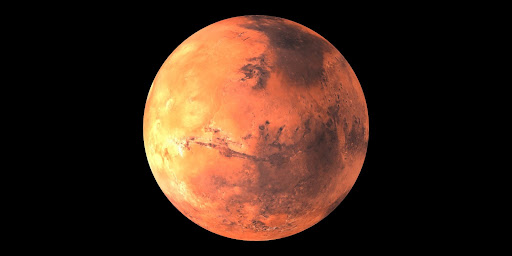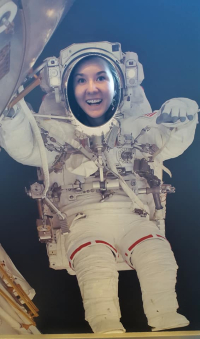
Staring up at the stars is a pastime that doesn’t get nearly enough attention. You’re looking at worlds that are unimaginably far away from you while watching the laws of the universe play out. While it’s perfectly possible to appreciate the view without knowing anything about astronomy, there’s just something satisfying about having knowledge about what you’re seeing. Here are 10 astronomy facts about the solar system that will allow you to develop a deeper appreciation for the amazing sights you can see every night.
1. The Majority Of The Stars You See Aren't Dead
There’s a common misconception that when you’re looking up at the sky, you’re seeing thousands of dead stars who are still sending light out into the universe. It’s a poetic thought, but it’s also false. Most of the stars in the night sky are still out there, shining away. After all, stars burn for millions of years. What are the chances all the ones you see would have perished by now?
2. Some Of The Dust Sitting In Your Home Right Now Came From Space
Want a great reason not to have to dust? Every day, space dust and meteorites fall to Earth and cover us with between 5 and 300 metric tons of the stuff. Imagine that! On your mantle right now, you could have tiny fragments of rock from space. From now on whenever someone asks you why you haven’t dusted, you can tell them you’re collecting samples.
3. A Tiny Percentage Of The Energy Released By The Sun Reaches Earth
We know that the Sun releases massive amounts of energy on a daily basis. Our world is warmed and kept alive by this energy, and we’re fairly close, so we must be receiving a lot, right? Not exactly. In fact, the total amount of energy the Earth receives from the Sun is just about one one-billionth of the total amount of energy the Sun generates. This is a teeny tiny fraction, and yet if we could harness it all we would be able to power the entire world many times over.
4. Uranus Is Tipped Over On Its Side
There’s something that makes Uranus truly odd, and that is the tilt of its axis. The angle of tilt is at 98 degrees, meaning it is essentially on its side. At any given time, one of its poles is directly facing the sun, and the other is in total darkness. Theories as to how Uranus became so off-balance suggest that impacts during the formation of the solar system progressively knocked it over bit by bit until it reached the tilt we see it at now.
5. The Outer Planets (Jupiter, Saturn, Neptune & Uranus) Don’t Have Solid Surfaces
The term “gas giant” is just a name until you really think about what it means. Our largest planets, Jupiter, Saturn, Neptune, and Uranus, are gas giants. Because their composition is by and large gaseous, they have no solid surface to speak of. This means we can never land on them and walk around because there’s nothing to walk on!

6. The Highest Mountain Known To Man Is Located On Mars
If you think Mount Everest is big, you’re in for a shock. As inhabitants of Earth, we tend to be proud of our planet and its amazing formations. But when you venture out into the solar system, you realize that our environment is relatively tame. Mars, for instance, is home to the highest mountain we know of, called Olympus Mons. It’s a shield volcano that stretches 22km into the sky. To compare, Mount Everest is a puny 8.848 km tall.
7. The Vast Majority Of The Matter In The Universe Is Invisible To Us
There’s a lot of stuff in the universe, and all that stuff is helping the universe expand. The problem is, we’ve accounted for all the matter we can see (stars, galaxies, etc.). Yet somehow, all of it doesn’t add up to the amount we need for the expansion we’ve observed. What gives? Scientists have cleverly named this missing matter “dark matter” since we can’t see it, but are pretty sure it has to be there. It should account for about 85% of all the matter in the universe. That’s a lot of matter that’s missing.
8. Black Holes Don’t “suck in” Matter, But They Are Still Pretty Wacky
There are a lot of misconceptions surrounding black holes, which isn’t surprising given how odd they are. They stretch our understanding of physics and challenge logic, but they’re still worth looking into (if we could) and attempting to understand. Black holes aren’t like cosmic vacuums that “suck up” nearby objects. They’re not even really holes. They are areas of massive gravity that exert such a strong pull that if something gets too close, it can’t ever get out, even light. Earth has an escape velocity that we have to overcome when we want to send rockets into space, and black holes are the same. The only problem is that the escape velocity past a certain point is unreachable, even for light.
9. Space Is So Empty That If Two Galaxies “collide”, Very Little Would Be Destroyed
You may have heard that at some point in the future, our galaxy will collide with our nearest neighbor, the Andromeda galaxy. This may conjure images of exploding stars and planetary crashes on a massive scale, but the reality is much more tame. Despite the fact that galaxies are filled with stuff, space is huge. It’s really unbelievably spread out, and that means that there are millions of miles between everything. When the collision happens, it’s very unlikely that objects from one galaxy will strike objects from the other. Instead, they’ll simply meld together into one glorious new galaxy.
10. When Black Holes Merge, Spacetime Itself Shivers
Remember how weird black holes are? It gets weirder. Black holes can merge with one another, and because their gravities are so massive, crazy things happen. When two black holes merge, it can be felt throughout spacetime. Think of spacetime like a sheet pulled tight. Drop something on one side, and it’ll send vibrations out to the other end. This is essentially what happens to the fabric of space when black holes merge. These vibrations are really ripples that we call gravitational waves, and we’ve been able to detect many. Space is strange and incredible. There’s so much more to know, and these facts are just the start. Get out there and start exploring. Be curious. Don’t just look up, but ask questions about what you see. The only way we make scientific progress is if people keep asking two key questions: ‘how? And why?’.

Learn More
Interested in learning more about what's going on in the Solar System? Check out our Astronomy Hub!
This Article was Last Updated on 07/25/2023












